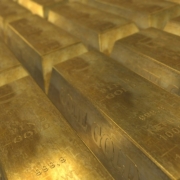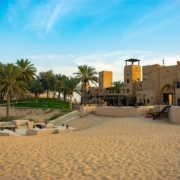What is POSCO in South Korea?
Paper 1: Understanding the Global Economy (1945-2000)
Section B: Essay Writing
Theme II Chapter 3: Rise of Asian Tigers from 1970s to 1990s [South Korea and Taiwan]
Learn more about the world-renowned steelmaker POSCO [Video by Arirang News]
The steel industry in South Korea: A historical background
In the 1960s, the steel industry in South Korea was largely absent. Three decades later, Korea became the world’s sixth-largest steel producing country. This development can be explained by General Park Chung-hee’s aim for Korea to be self-sufficient in steel production.
Steel has been commonly known as the ‘staple of industry‘, in which this versatile metal is highly applicable in many basic industries, such as shipbuilding, construction, machinery and automotive. Hence, its complementary nature further underpinned South Korea’s economic success.
Enter Park Tae-Joon
In 1967, the Korean government picked Pohang as the location for the construction of the first integrated steelworks. The Korea Tungsten Company was selected as the end-user of the integrated steelworks. The president of the Korea Tungsten Company was Park Tae-Joon.
Park Tae-Jun was known for prioritizing “speedy operations.” Under his direction, the construction of POSCO in the early years were completed well ahead of schedule which not only saved time but millions of dollars (Seo 2011). This was even more extraordinary considering that the construction site was formerly a barren sand field that lacked any related and supporting infrastructure.
[…] CEO Park was also well known for his diligence and dedication. Park believed that the best way to lift his employees’ total commitment to work was for him to set a good example. Park spent most of his time on site with the workers while the first steel plant was being completed. He promptly abandoned all leisure activities and hobbies to focus on the plant construction. Park’s diligence had a marked impact on all of POSCO employees, who were motivated to follow the footsteps of their CEO.
An excerpt taken from “Strategy for Korea’s Economic Success” by Hwy-Chang Moon.
Park Tae-Joon was then appointed to helm the newly-formed Pohang Iron and Steel Company (POSCO) on 1 April 1968. However, POSCO’s developments were not entirely smooth-sailing from the start.
Although the Korean President Park Chung-hee engaged foreign steel companies to form the Korea International Steel Associates (KISA) in 1966, the POSCO leader received confirmation that the securing of loans from KISA was not possible. In response, Park Tae-Joon capitalised on his extensive networks in Japan to find a solution.
In December 1969, the “Korea-Japan Framework Agreement” was signed, granting POSCO the right to sign a technology service contract with Japan Group. Japan Group comprised of three companies (Yawata Steel Works, Nippon-Kokan KK and Fuji Steel Corporation) that offered their technological expertise to facilitate the construction and operation of integrated steelworks in South Korea.
Korea’s economic rise in the 1970s
On 1 April 1970, POSCO launched Phase 1 of its comprehensive construction of the Pohang steelworks at Yeongilman Bay. POSCO’s objectives were aligned with the Korean government’s, in which General Park later put forth the Heavy and Chemical Industrialisation (HCI) Plan in 1973.
Creating domestic capabilities for steel production was a vital step for sustainable economic development, given the changes to American foreign policy in Asia by the early 1970s. The diminished American military presence in Indochina and parts of East Asia made General Park Chung-hee more certain that the formulation of a HCI Plan was the right step to take.
The deteriorating condition of military security put the HCI drive on a qualitatively different plane as well. With President Nixon’s visit to China in 1972, the U.S. Seventh Infantry Division’s withdrawal from South Korea in 1971, and the U.S. military disengagement from South Vietnam in 1972, Park’s urgency in developing the steel industry as part of South Korea’s modern defense industries rose dramatically.
[…] The launching of HCI profoundly strengthened the status of the steel industry within the hierarchy of the national agendas. Park looked at the steel industry as the engine of deepening industrial development. This change of perception within the inner policy circles led to the announcement in July 1973 of plans to construct a second integrated steel mill upon the completion of POSCO. To support the simultaneous development of the shipbuilding, electronics, machinery, and nonmetal materials industries, Park called for increasing the South Korean steel production capacity from one million tons in 1973 to ten million by 1980.
An excerpt taken from “The Park Chung Hee Era: The Transformation of South Korea” by Byung-Kook Kim and Ezra F. Vogel.
What can we learn from this article?
Consider the following question:
– How far do you agree that the economic transformation of South Korea between 1970 and 1990 was the result of business conglomerates?
Join our JC History Tuition to learn more about the Global Economy and the Asian Tiger economies. The H2 and H1 History Tuition feature online discussion and writing practices to enhance your knowledge application skills. Get useful study notes and clarify your doubts on the subject with the tutor. You can also follow our Telegram Channel to get useful updates.
We have other JC tuition classes, such as JC Math Tuition and JC Chemistry Tuition. For Secondary Tuition, we provide Secondary English Tuition, Secondary Math tuition, Secondary Chemistry Tuition, Social Studies Tuition, Geography, History Tuition and Secondary Economics Tuition. For Primary Tuition, we have Primary English, Math and Science Tuition. Call 9658 5789 to find out more.


 https://pixabay.com/photos/gold-bars-wealth-finance-gold-bars-163519/
https://pixabay.com/photos/gold-bars-wealth-finance-gold-bars-163519/